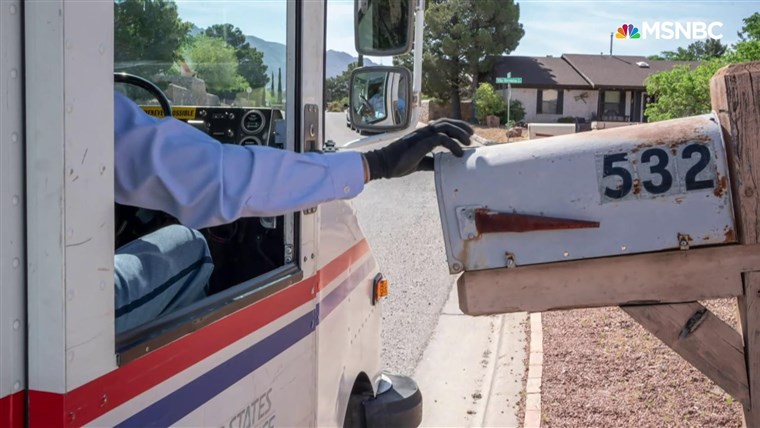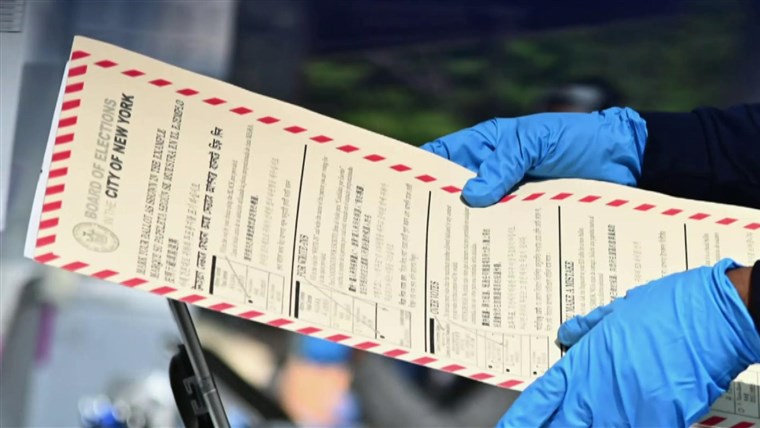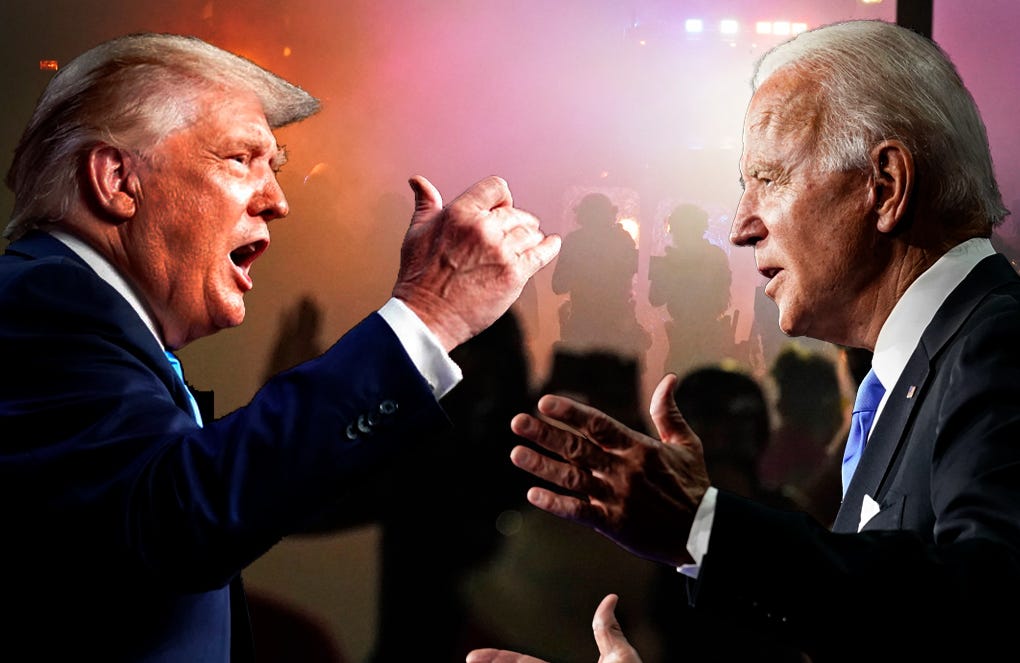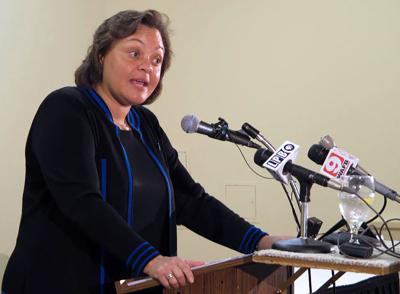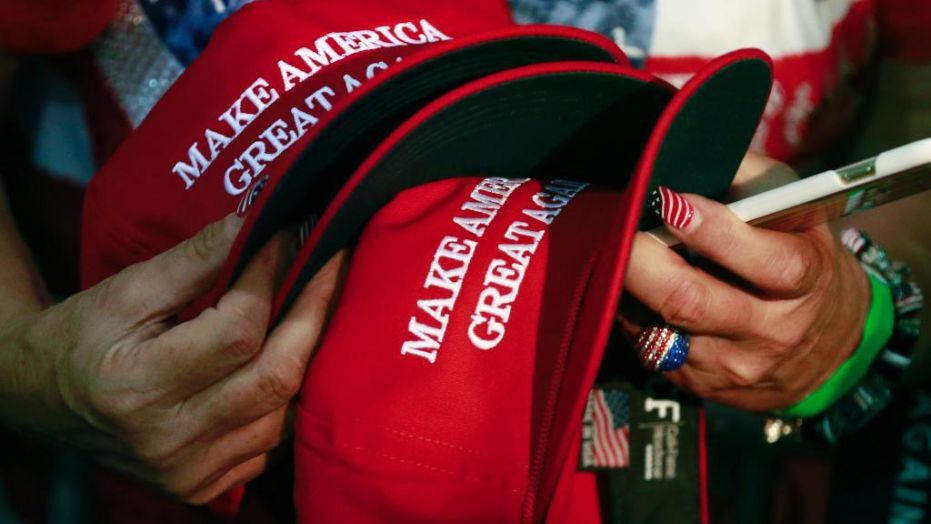Jessica King’s absentee ballot application never arrived. She tried to vote early at her polling location near her home in Albany, Georgia — but left when the crowd made social distancing impossible.
Finally, thanks to an early alarm on Election Day and a nearly hourlong wait, King, 27, was able to vote in the state’s June primary.
The obstacles she encountered to safely casting a ballot several months into a pandemic were frustratingly familiar to her as a Black voter.
“As a person of color, the worry that my vote won’t get counted is always there,” King, who works at a nonprofit community advocacy group in Albany, said in an interview. “It’s not because we don’t trust the system, it’s because the experiences we have had. History has taught us that people of color — our vote does not get counted when it really matters.”
Voting by mail has been championed — rightly, experts say — as the safest way to participate in the 2020 election while the nation remains under threat from the coronavirus, which has killed more than 160,000 and sickened millions, with no end in sight. Many of those same experts have for years advocated the expansion of mail voting as a proven way to increase participation in a democracy where an estimated 43 percent of the eligible population, for one reason or another, does not vote.
But the changes that states are scrambling to make ahead of November to help protect voters from COVID-19 — expanding their mail and absentee voting systems while reducing the number of polling locations — risk supersizing the issues of racial discrimination and disenfranchisement that Black, Hispanic and other voters of color have already spent generations fighting.
The cause was dear to the late Rep. John Lewis, the longtime Democratic congressman from Georgia and a giant of the civil rights movement, who was beaten on the Edmund Pettus Bridge in Selma, Alabama, for marching in support of voting rights in March of 1965 at a time when poll taxes and literacy tests were written into law.
Such rampant discrimination across the country was ultimately met with the landmark Voting Rights Act 55 years ago, which devoted significant federal resources to enfranchise Black voters when the states wouldn’t. Federal examiners went to the South, registering tens of thousands of Black voters when county clerks refused. States and counties with a history of discrimination were required to prove to the Department of Justice that new election rules wouldn’t disenfranchise voters of color.
For the next half-century, civil rights leaders, voting rights advocates and the Department of Justice fought to make more fair an election system designed for white landowning men.
And while Black voters no longer must guess the number of jelly beans in a jar to cast a ballot, inequality persists. States have put in place voter ID requirements and restrictive voting laws that disproportionately make it harder for people of color to vote, while persistent gerrymandering dilutes the power of voters.
In 2013, the Supreme Court gutted the Voting Rights Act, allowing states and counties with a history of discrimination to run their elections without federal oversight. More than 1,600 polling places closed between 2012 and 2018 in those areas, without federal oversight. Many states have worked to aggressively purge their voter rolls, while other states have deployed new and restrictive laws in the name of preventing fraud, despite the lack of evidence that fraud pervades American elections.
And then came the COVID-19 pandemic, ravaging an ill-prepared country and dashing plans for a normal Election Day.
Now, advocates fear that voting changes will put the Black and Latino people suffering the most in the pandemic at risk of losing their voting rights. Young, diverse Americans who have spent the summer mobilizing for racial justice may face the highest barriers to participation, not to mention the millions of Americans facing evictions this summer, for whom voting by mail may well be impossible.
“If we don’t do anything differently now, we’re going to see not only dramatic racial disparities, but also just large-scale disenfranchisement across the board,” said Wendy Weiser, vice president of the Democracy Program at the Brennan Center for Justice at the NYU School of Law. “There’s disparities at every step of the process and they’re going to be really exacerbated — they’re already being exacerbated — by the coronavirus.”
Both major political parties, along with advocates including the American Civil Liberties Union, the League of Women Voters, and the NAACP have launched a barrage of lawsuits over how absentee rules are used and updated. Republicans, led by President Donald Trump, are raising the alarm over the threat of voter fraud, which is unproven, and have rushed to defend existing laws, while Democrats, who have reliably enjoyed the support of the groups most at risk of disenfranchisement, say they’ll spare no expense to enfranchise more people.
“This is maybe the biggest election administration challenge of our lifetimes,” Dale Ho, director of the ACLU Voting Rights Project, said.
As many as 64 percent of Americans are expected to vote by mail this year, according to a group of researchers at Harvard, Northeastern, and Rutgers universities, as well as the Harvard Medical School. That’s a huge increase over the 23 percent who voted by mail in 2018, according to census data.
Advocates like Ho have been pushing to increase voting access this way for years, but many worry the nation is botching the rollout: Congress has so far offered up just $400 million in additional election funding despite estimates that states need $4 billion in federal funding to manage safe, mail-heavy elections. House Democrats included $3.6 billion for election funding as part of a $3 trillion coronavirus relief package the chamber passed in May, but Senate Republicans have been resistant to providing local governments with cash to help conduct elections.
“We are stress-testing all the institutions of democracy at once,” said Justin Levitt, a former Justice Department voting rights official and a professor at the Loyola Law School.
In a pandemic, voting by mail appears an obvious choice to simultaneously preserve access to the polls and public health. Western states such as California, Oregon and Colorado have been doing it for years, but in practice across the country, voting by mail — most commonly known as absentee voting — disproportionately benefits certain groups of voters.
Older, white voters are significantly more likely to vote by mail and have those ballots counted, studies show, while voters of color and younger voters are significantly more likely to have their ballots rejected.
“Nobody has closely scrutinized the fairness of absentee voting rules because most people weren’t voting by mail ballot and most people have reasonable, alternative voting methods without risking their lives,” Weiser said.
Daniel A. Smith, a political science professor at the University of Florida, has been examining the effects of mail election regulations this year. In April, he co-published a paper reporting that Hispanic and Black voters were more than twice as likely to have their ballot rejected as white voters in Florida’s 2018 general election. In May, he co-published a review of Georgia’s 2018 midterm election data that found a similar pattern of rejection for voters of color. For example, in Gwinnett County, the second most-populous county in Georgia, some 4 percent of white voters’ absentee ballots were rejected, while 8 percent of black voters’ absentee ballots were rejected.
“We’re in a crazy world where there’s this trade-off between our health and our vote. I understand completely why people want to vote by mail — it’s by far the safest method of voting. But it’s one that’s not costless,” he said.
Smith said he plans to vote in person in November. “I’ll don my PPE,” he said, referring to personal protective equipment.
